|
SNAP Library 6.0, Developer Reference
2020-12-09 16:24:20
SNAP, a general purpose, high performance system for analysis and manipulation of large networks
|
|
SNAP Library 6.0, Developer Reference
2020-12-09 16:24:20
SNAP, a general purpose, high performance system for analysis and manipulation of large networks
|
Local-Spectral-Clustering for a set of graphs (loads ncp-*.tab files) More...
#include <ncp.h>
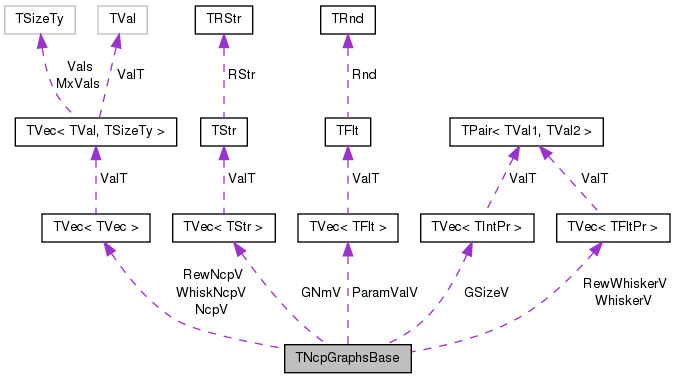
Public Member Functions | |
| TNcpGraphsBase (const TStr &FNmWc) | |
| TNcpGraphsBase (TSIn &SIn) | |
| void | Save (TSOut &SOut) const |
| void | Impose (const TStr &OutFNm, const int &TopN, const bool &Smooth) |
| double | GetXAtMinY (const TFltPrV &Ncp, const int &NNodes) |
| TFltPr | GetXYAtMinY (const TFltPrV &Ncp, const int &NNodes) |
| void | PlotNcpMin (const TStr &OutFNm, const bool &VsGraphN=false) |
| void | SaveTxtNcpMin (const TStr &OutFNm, const bool &VsGraphN=false) |
| void | PlotRewNcpMin (const TStr &OutFNm, const bool &VsGraphN=false) |
| void | PlotBestWhisker (const TStr &OutFNm, const bool &VsGraphN=false) |
| void | PlotRewBestWhisker (const TStr &OutFNm, const bool &VsGraphN=false) |
| void | PlotAvgNcp (const TStr &OutFNm, const TVec< TFltPrV > &NcpVec, const int &MinSz, const double &MaxMinY) |
| void | SaveTxt (const TStr &OutFNm) |
Static Public Member Functions | |
| static void | PlotDataset (const TStr &InFNmWc, const TStr &OutFNm, const bool &ImposeNcp=false, const bool &VsGraphN=false) |
Private Attributes | |
| TStrV | GNmV |
| TFltV | ParamValV |
| TIntPrV | GSizeV |
| TFltPrV | WhiskerV |
| TFltPrV | RewWhiskerV |
| TVec< TFltPrV > | NcpV |
| TVec< TFltPrV > | RewNcpV |
| TVec< TFltPrV > | WhiskNcpV |
Local-Spectral-Clustering for a set of graphs (loads ncp-*.tab files)
| TNcpGraphsBase::TNcpGraphsBase | ( | const TStr & | FNmWc | ) |
Definition at line 1064 of file ncp.cpp.
References TVec< TVal, TSizeTy >::Add(), TStr::CStr(), TStr::Fmt(), TSsParser::GetFlds(), TSsParser::GetFlt(), TStr::GetFMid(), TStr::GetSubStr(), GNmV, GSizeV, IAssert, TSsParser::IsFlt(), TVec< TVal, TSizeTy >::Last(), TVec< TVal, TSizeTy >::Len(), NcpV, TFFile::Next(), TSsParser::Next(), ParamValV, RewNcpV, RewWhiskerV, TStr::SearchCh(), TStr::SearchChBack(), TStr::SearchStr(), ssfTabSep, WhiskerV, and WhiskNcpV.
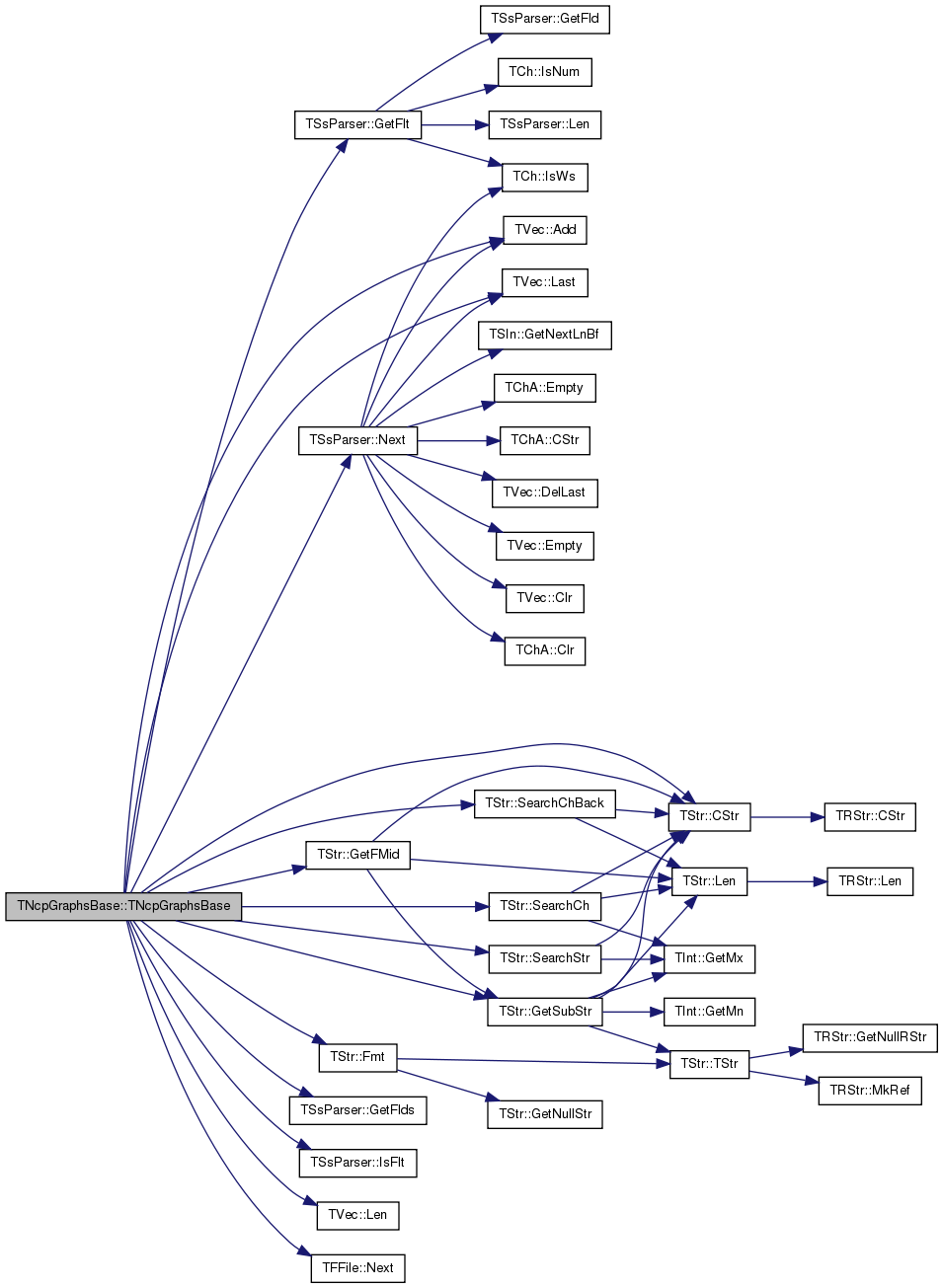
| double TNcpGraphsBase::GetXAtMinY | ( | const TFltPrV & | Ncp, |
| const int & | NNodes | ||
| ) |
Definition at line 1133 of file ncp.cpp.
References TVec< TVal, TSizeTy >::Len().

Definition at line 1166 of file ncp.cpp.
References TVec< TVal, TSizeTy >::Len().
Referenced by PlotNcpMin(), PlotRewNcpMin(), and SaveTxtNcpMin().


| void TNcpGraphsBase::Impose | ( | const TStr & | OutFNm, |
| const int & | TopN, | ||
| const bool & | Smooth | ||
| ) |
Definition at line 1124 of file ncp.cpp.
References TGnuPlot::AddPlot(), GNmV, gpsLog10XY, gpwLines, TMath::Mn(), NcpV, TGnuPlot::SavePng(), and TGnuPlot::SetScale().
Referenced by PlotDataset().


| void TNcpGraphsBase::PlotAvgNcp | ( | const TStr & | OutFNm, |
| const TVec< TFltPrV > & | NcpVec, | ||
| const int & | MinSz, | ||
| const double & | MaxMinY | ||
| ) |
Definition at line 1247 of file ncp.cpp.
References TMom::Add(), THash< TKey, TDat, THashFunc >::AddDat(), gpsLog, gpwLines, GSizeV, TVec< TVal, TSizeTy >::Len(), TGnuPlot::PlotValMomH(), and TMath::Round().
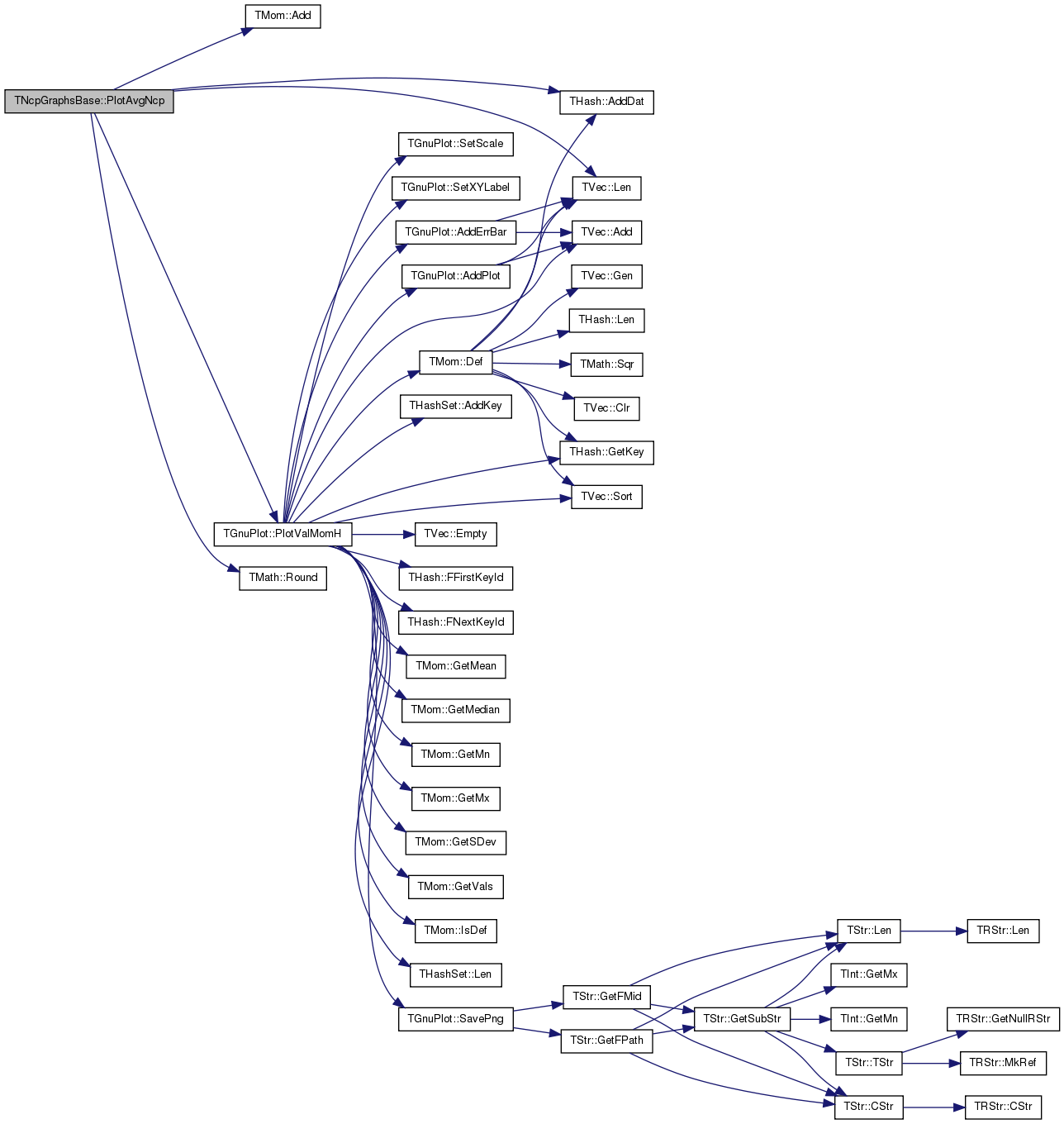
| void TNcpGraphsBase::PlotBestWhisker | ( | const TStr & | OutFNm, |
| const bool & | VsGraphN = false |
||
| ) |
Definition at line 1217 of file ncp.cpp.
References TVec< TVal, TSizeTy >::Add(), TVec< TVal, TSizeTy >::Empty(), gpsLog, gpsLog10Y, gpwLinesPoints, GSizeV, TVec< TVal, TSizeTy >::Len(), ParamValV, TGnuPlot::PlotValV(), TVec< TVal, TSizeTy >::Sort(), and WhiskerV.
Referenced by PlotDataset().
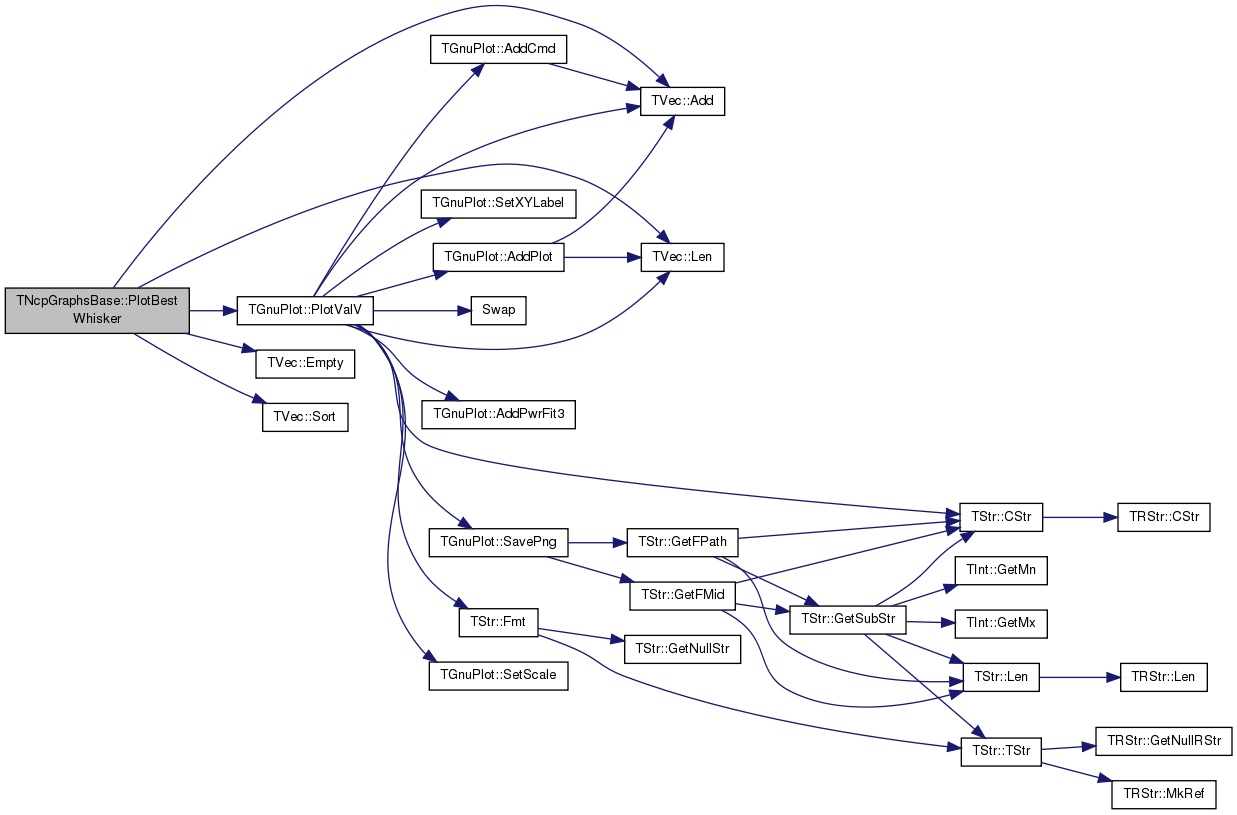

|
static |
Definition at line 1281 of file ncp.cpp.
References Impose(), PlotBestWhisker(), PlotNcpMin(), PlotRewBestWhisker(), and PlotRewNcpMin().
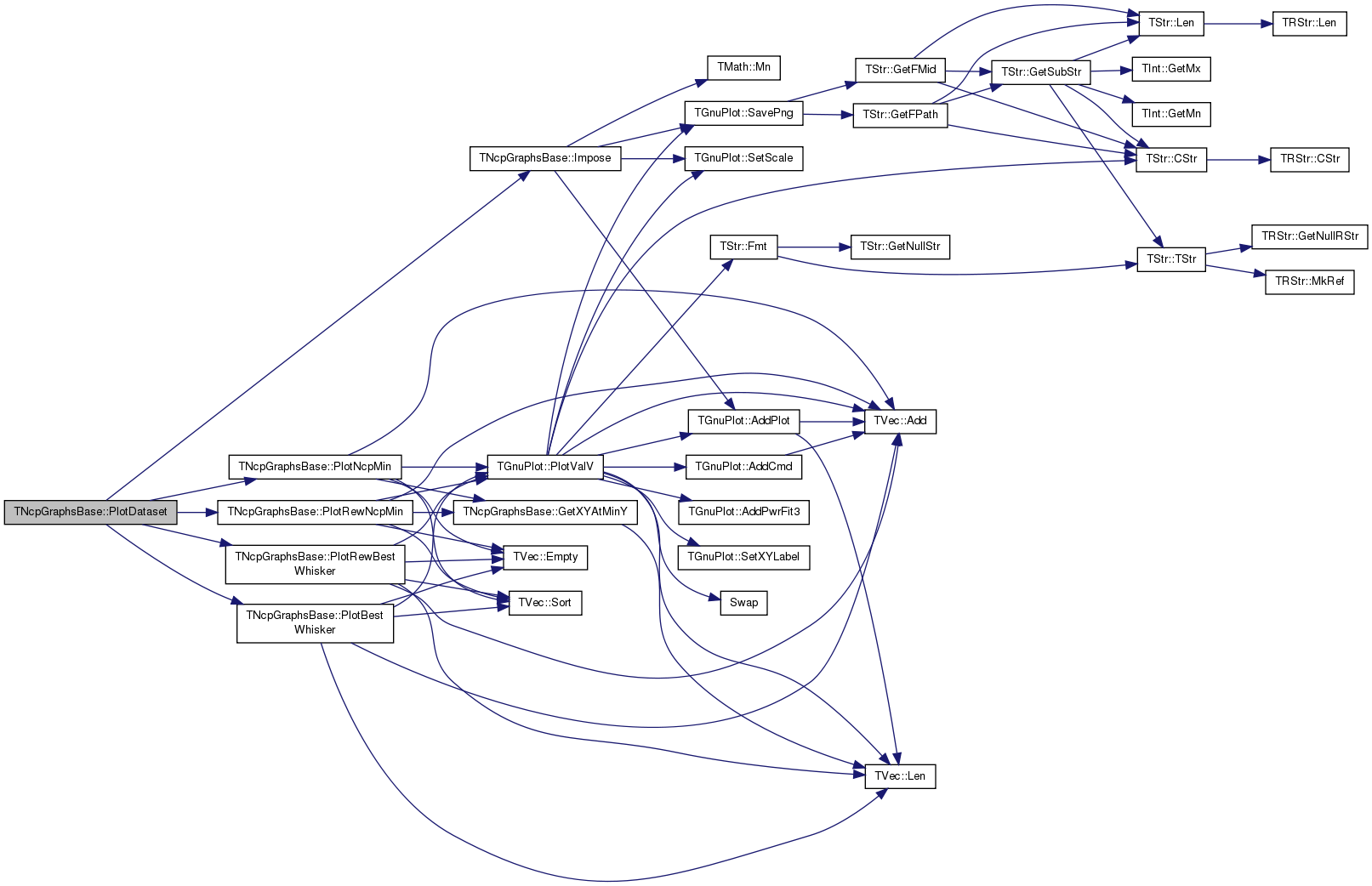
| void TNcpGraphsBase::PlotNcpMin | ( | const TStr & | OutFNm, |
| const bool & | VsGraphN = false |
||
| ) |
Definition at line 1173 of file ncp.cpp.
References TVec< TVal, TSizeTy >::Add(), TVec< TVal, TSizeTy >::Empty(), GetXYAtMinY(), gpsLog, gpsLog10Y, gpwLinesPoints, GSizeV, NcpV, ParamValV, TGnuPlot::PlotValV(), TVec< TVal, TSizeTy >::Sort(), TPair< TVal1, TVal2 >::Val1, and TPair< TVal1, TVal2 >::Val2.
Referenced by PlotDataset().


| void TNcpGraphsBase::PlotRewBestWhisker | ( | const TStr & | OutFNm, |
| const bool & | VsGraphN = false |
||
| ) |
Definition at line 1232 of file ncp.cpp.
References TVec< TVal, TSizeTy >::Add(), TVec< TVal, TSizeTy >::Empty(), gpsLog, gpsLog10Y, gpwLinesPoints, GSizeV, TVec< TVal, TSizeTy >::Len(), ParamValV, TGnuPlot::PlotValV(), RewWhiskerV, TVec< TVal, TSizeTy >::Sort(), and WhiskerV.
Referenced by PlotDataset().
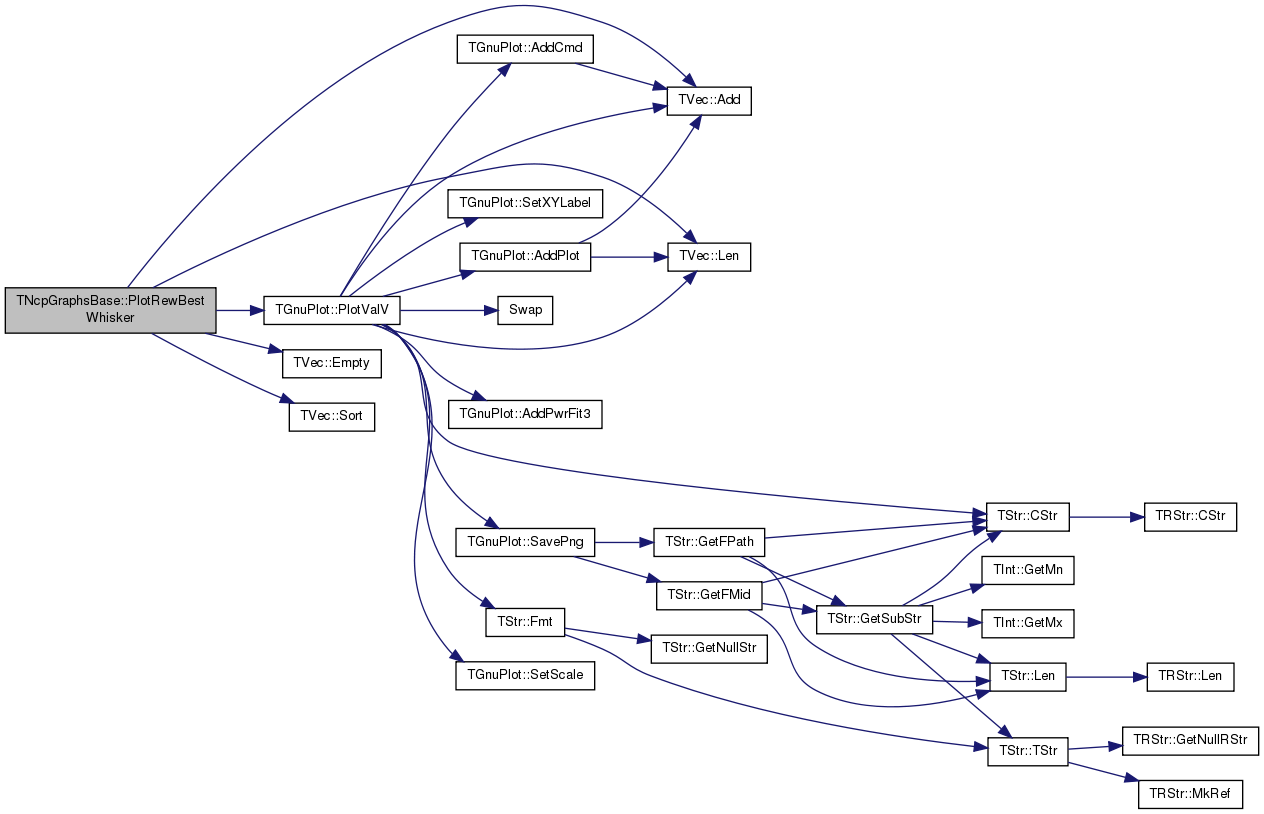

| void TNcpGraphsBase::PlotRewNcpMin | ( | const TStr & | OutFNm, |
| const bool & | VsGraphN = false |
||
| ) |
Definition at line 1203 of file ncp.cpp.
References TVec< TVal, TSizeTy >::Add(), TVec< TVal, TSizeTy >::Empty(), GetXYAtMinY(), gpsLog, gpsLog10Y, gpwLinesPoints, GSizeV, NcpV, ParamValV, TGnuPlot::PlotValV(), RewNcpV, TVec< TVal, TSizeTy >::Sort(), TPair< TVal1, TVal2 >::Val1, and TPair< TVal1, TVal2 >::Val2.
Referenced by PlotDataset().
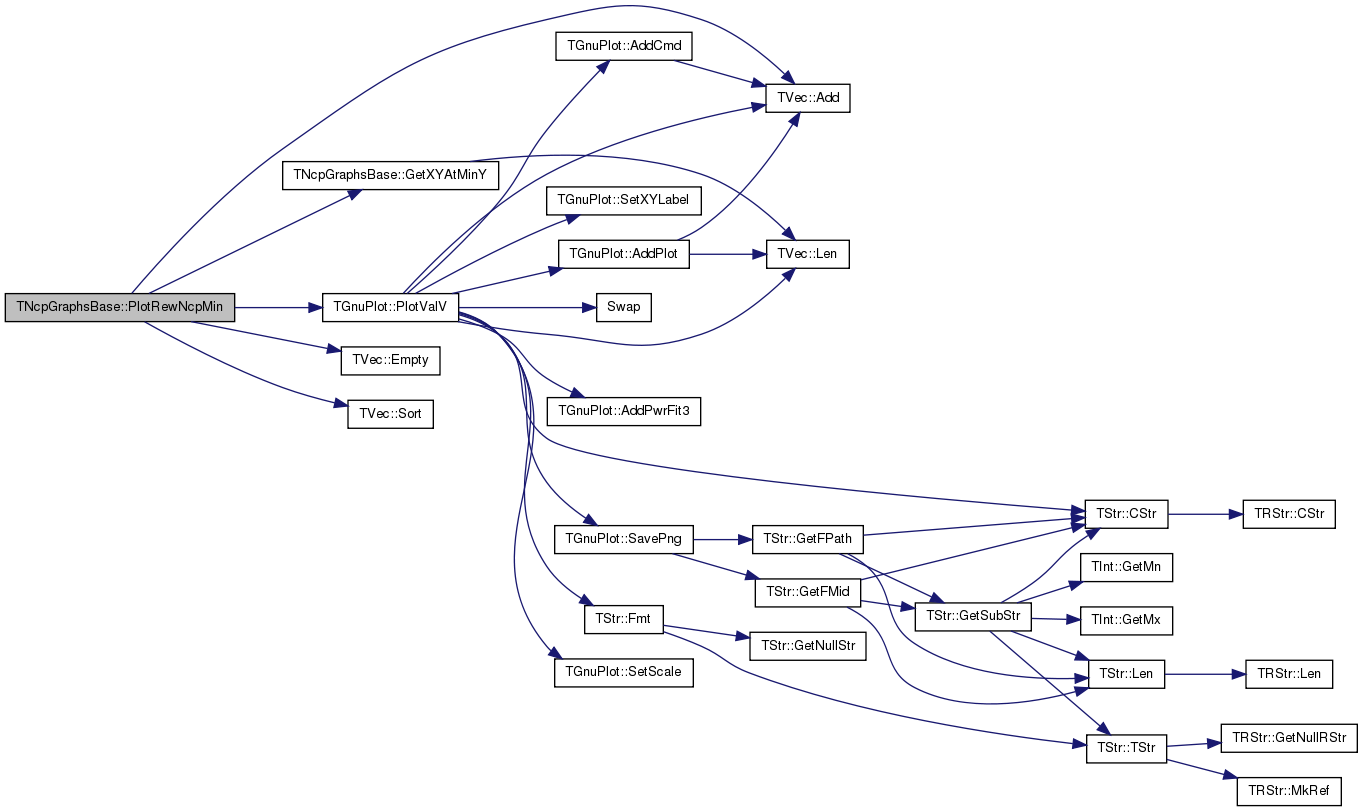

| void TNcpGraphsBase::Save | ( | TSOut & | SOut | ) | const |
Definition at line 1118 of file ncp.cpp.
References GNmV, GSizeV, NcpV, RewNcpV, RewWhiskerV, TVec< TVal, TSizeTy >::Save(), WhiskerV, and WhiskNcpV.

| void TNcpGraphsBase::SaveTxt | ( | const TStr & | OutFNm | ) |
Definition at line 1267 of file ncp.cpp.
References TStr::CStr(), GNmV, GSizeV, TVec< TVal, TSizeTy >::Len(), NcpV, and WhiskerV.

| void TNcpGraphsBase::SaveTxtNcpMin | ( | const TStr & | OutFNm, |
| const bool & | VsGraphN = false |
||
| ) |
Definition at line 1187 of file ncp.cpp.
References TVec< TVal, TSizeTy >::Add(), TStr::CStr(), TVec< TVal, TSizeTy >::Empty(), TStr::Fmt(), GetXYAtMinY(), GNmV, GSizeV, TVec< TVal, TSizeTy >::Len(), NcpV, ParamValV, TVec< TVal, TSizeTy >::Sort(), TPair< TVal1, TVal2 >::Val1, and TPair< TVal1, TVal2 >::Val2.

|
private |
Definition at line 243 of file ncp.h.
Referenced by Impose(), Save(), SaveTxt(), SaveTxtNcpMin(), and TNcpGraphsBase().
|
private |
Definition at line 245 of file ncp.h.
Referenced by PlotAvgNcp(), PlotBestWhisker(), PlotNcpMin(), PlotRewBestWhisker(), PlotRewNcpMin(), Save(), SaveTxt(), SaveTxtNcpMin(), and TNcpGraphsBase().
Definition at line 247 of file ncp.h.
Referenced by Impose(), PlotNcpMin(), PlotRewNcpMin(), Save(), SaveTxt(), SaveTxtNcpMin(), and TNcpGraphsBase().
|
private |
Definition at line 244 of file ncp.h.
Referenced by PlotBestWhisker(), PlotNcpMin(), PlotRewBestWhisker(), PlotRewNcpMin(), SaveTxtNcpMin(), and TNcpGraphsBase().
Definition at line 248 of file ncp.h.
Referenced by PlotRewNcpMin(), Save(), and TNcpGraphsBase().
|
private |
Definition at line 246 of file ncp.h.
Referenced by PlotRewBestWhisker(), Save(), and TNcpGraphsBase().
|
private |
Definition at line 246 of file ncp.h.
Referenced by PlotBestWhisker(), PlotRewBestWhisker(), Save(), SaveTxt(), and TNcpGraphsBase().
Definition at line 249 of file ncp.h.
Referenced by Save(), and TNcpGraphsBase().